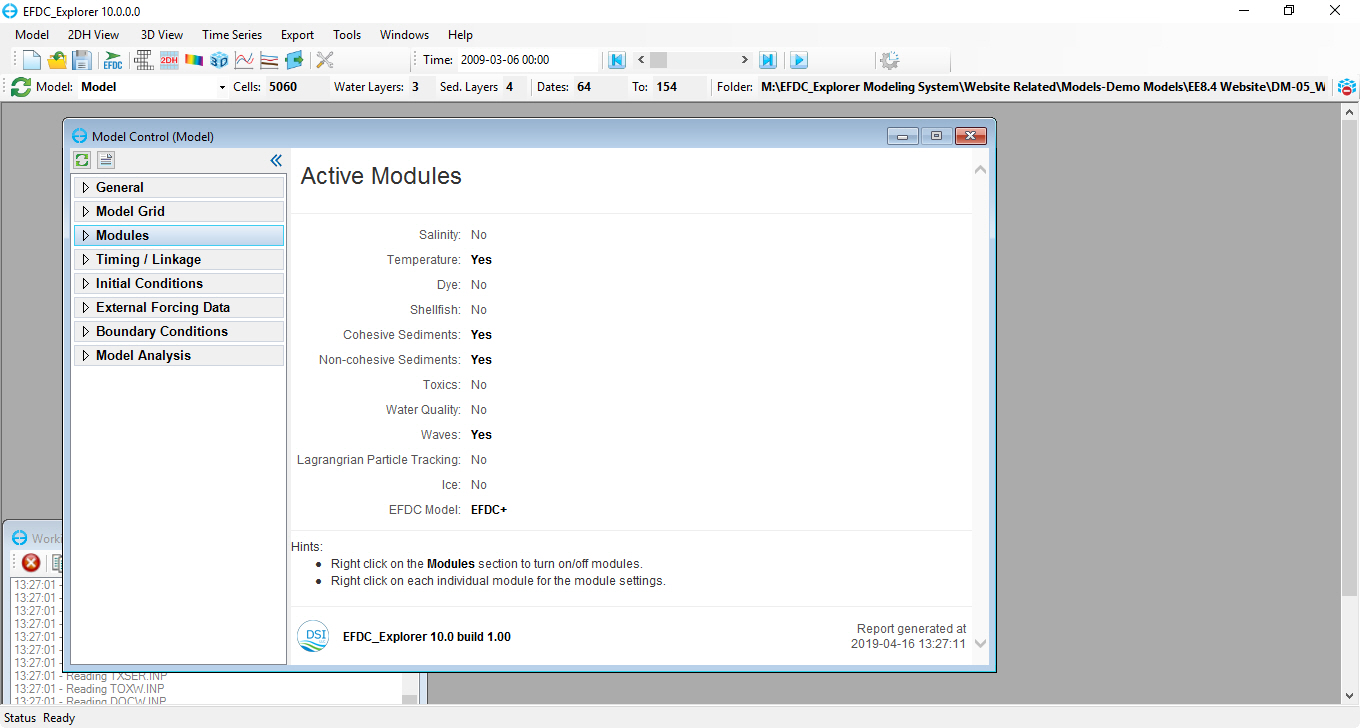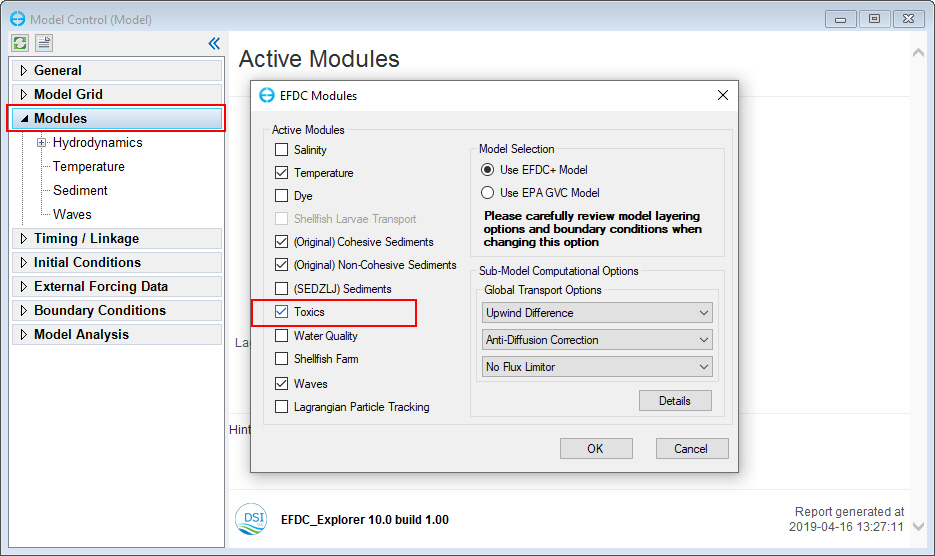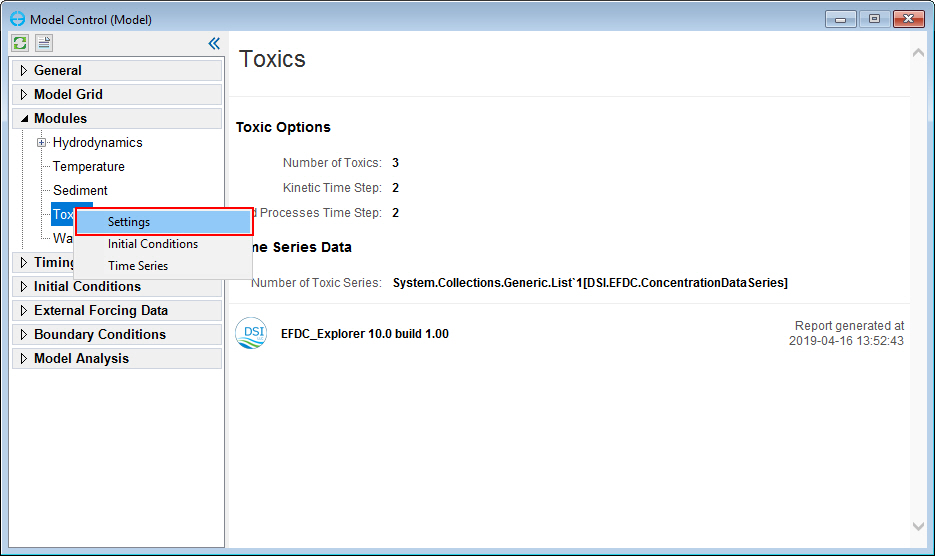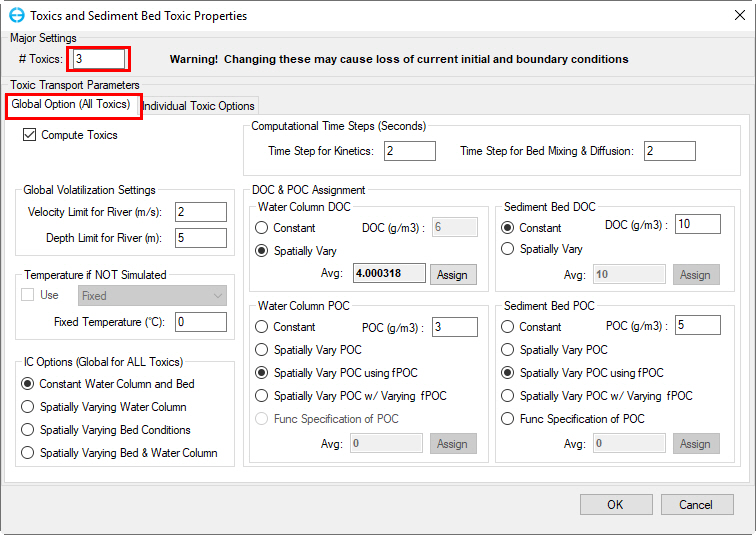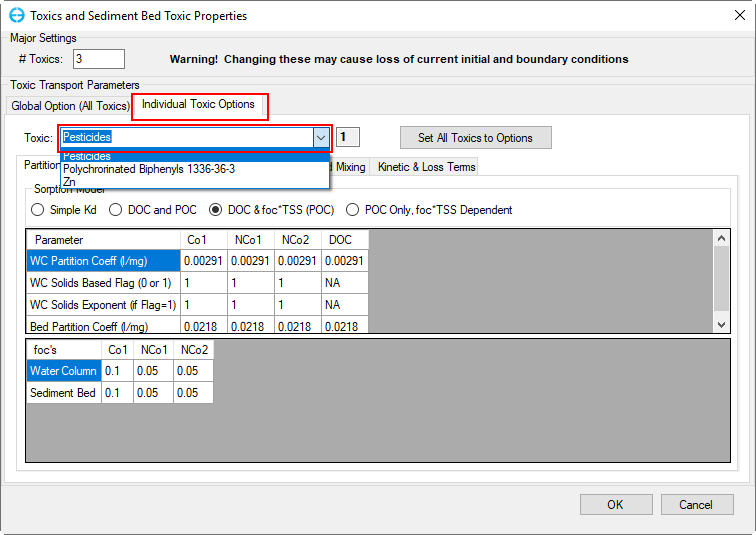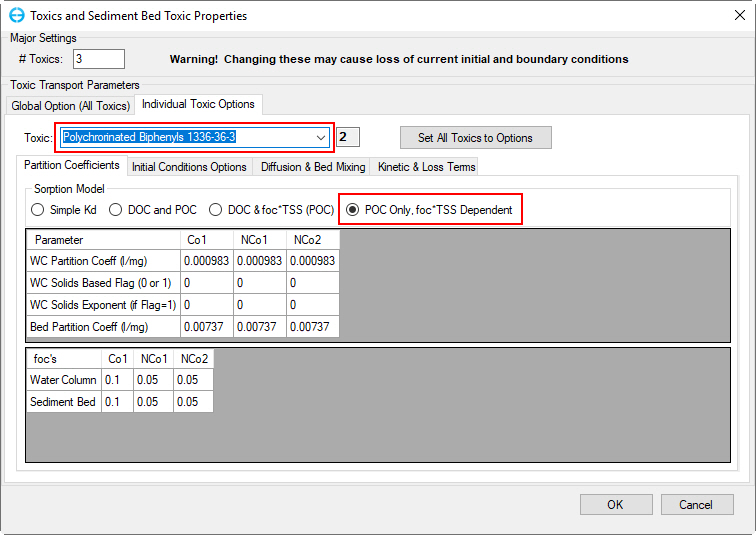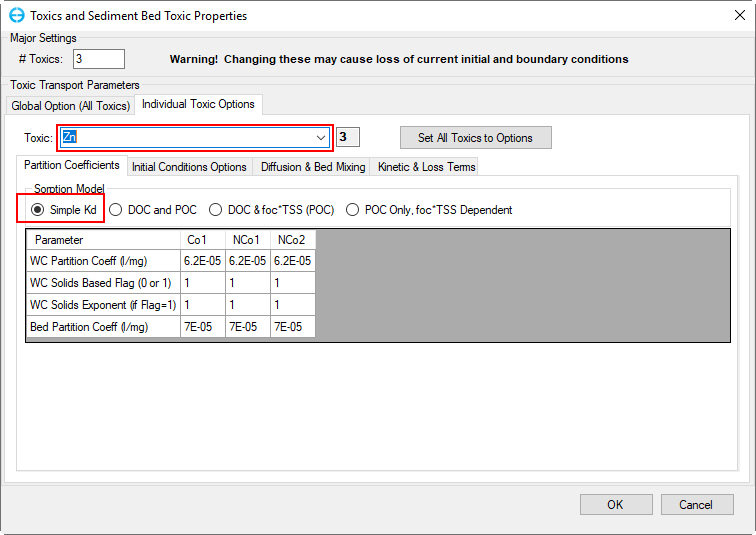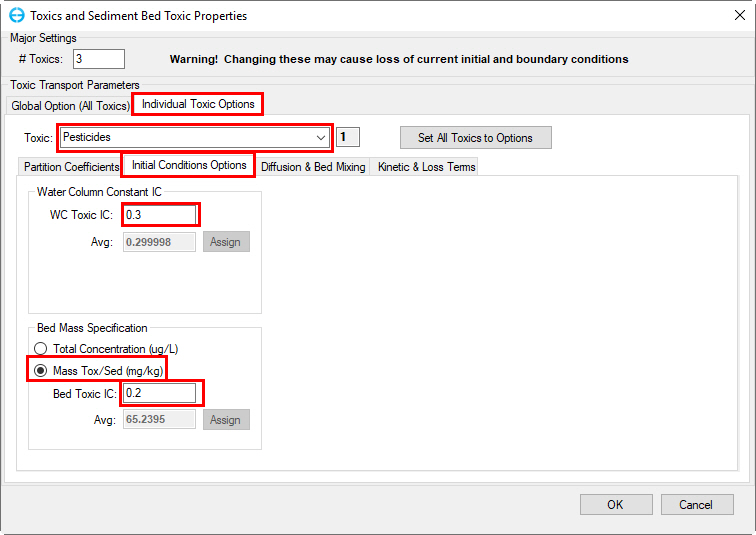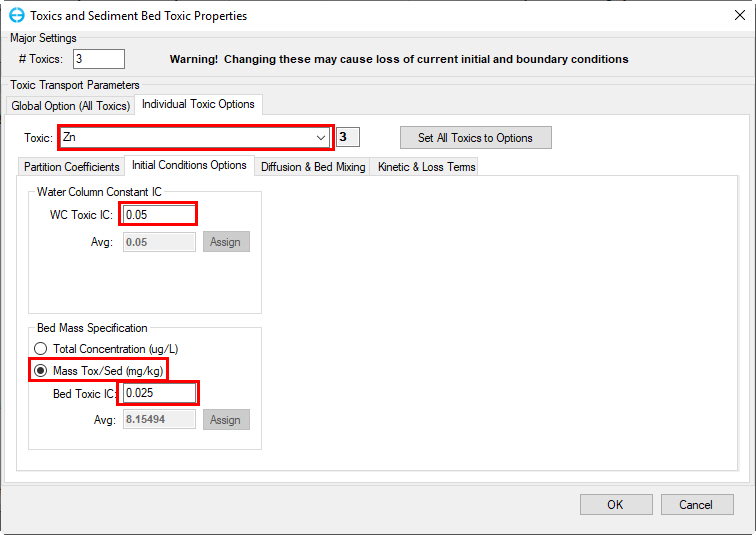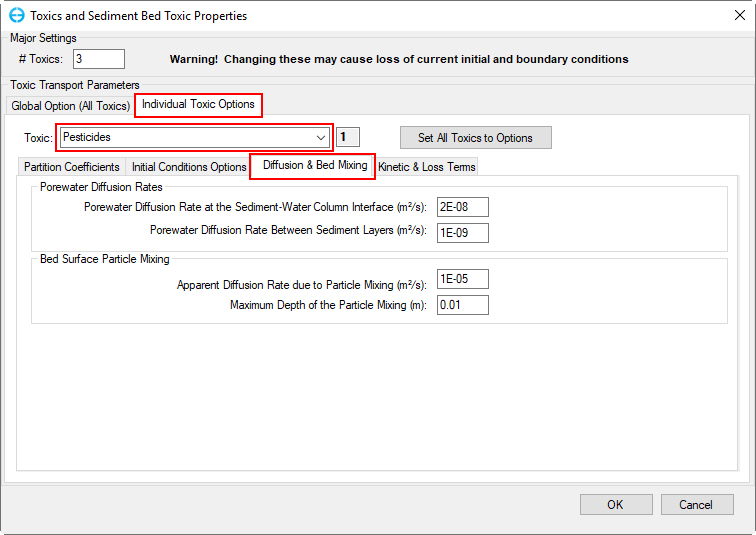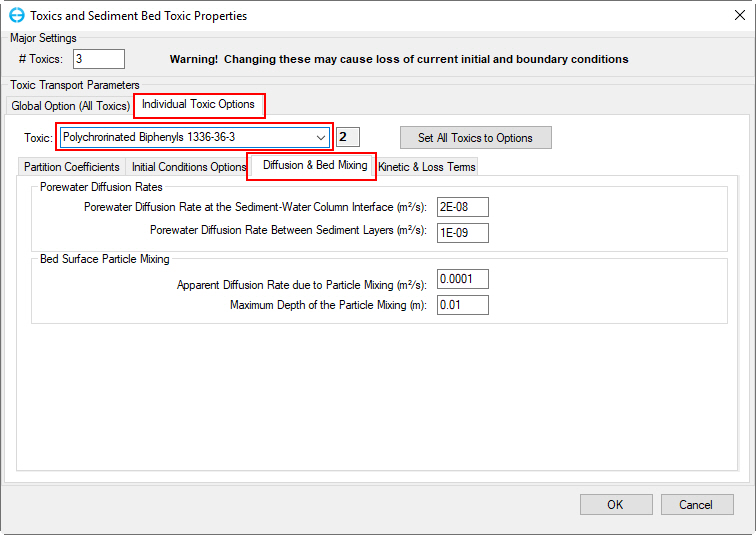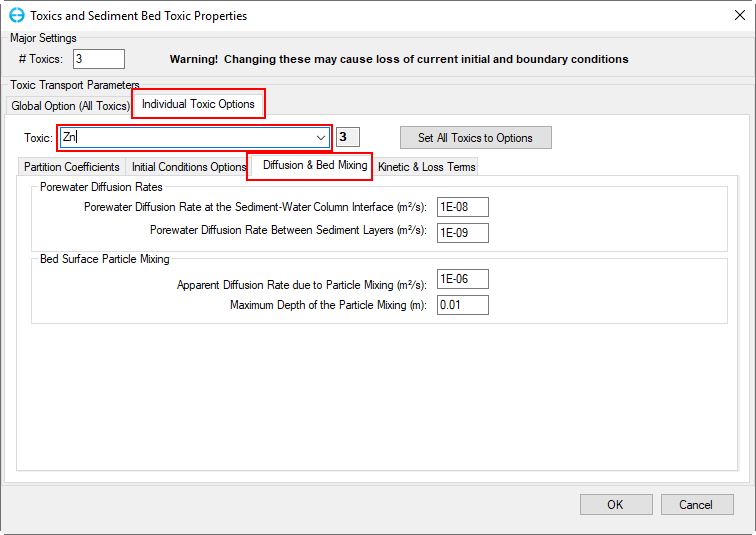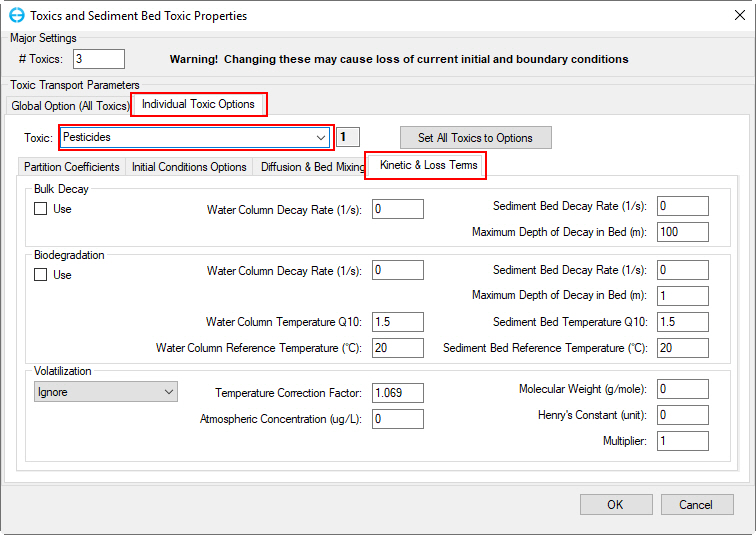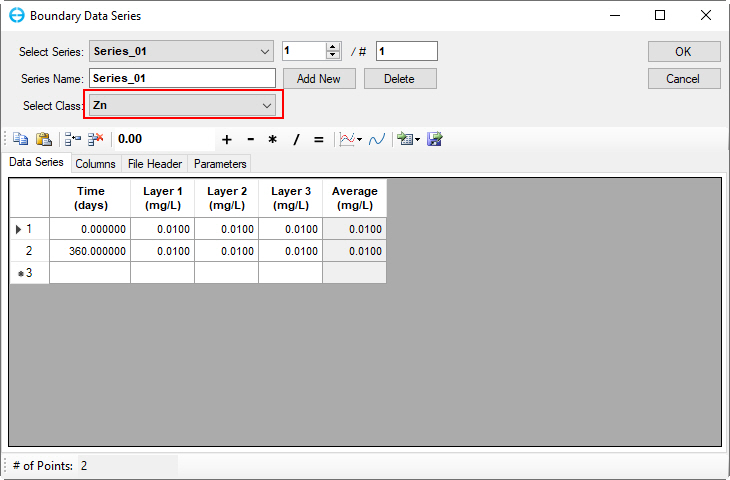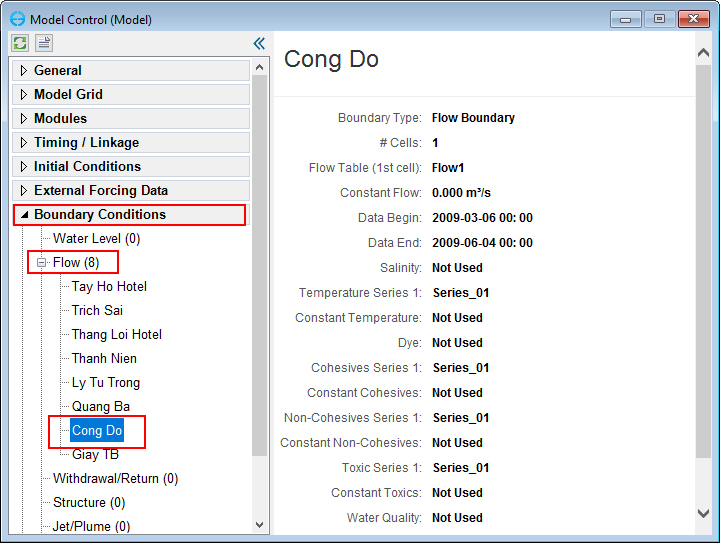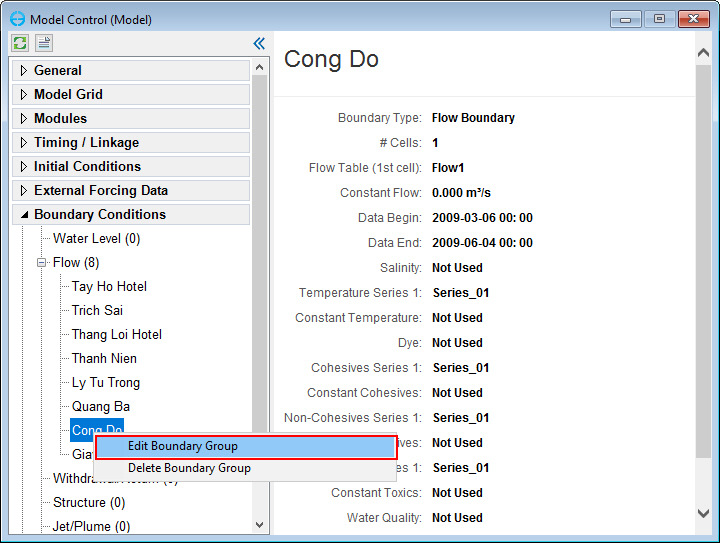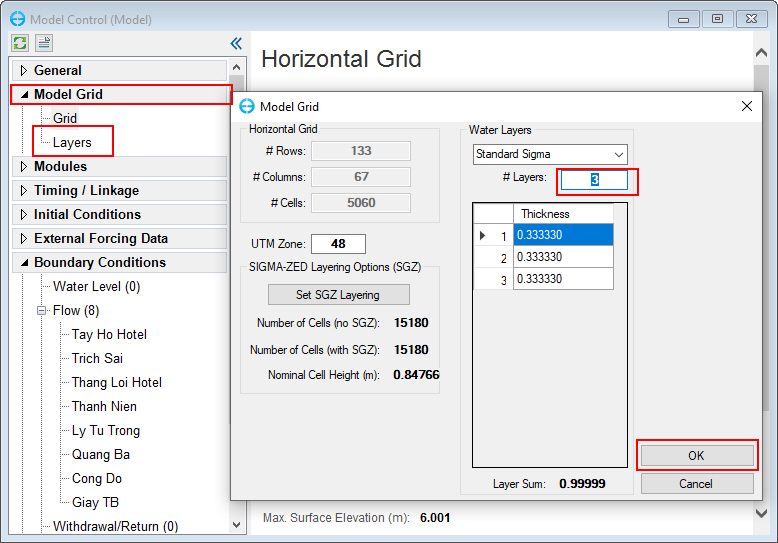1 Introduction
The toxics model is built base on an existing sediment transport model of West Lake. This example model can be downloaded from our website . The steps to build a sediment model is introduced in Tra Khuc Coastal Sediment Model.
This tutorial document will guide you how to setup a Toxics Model base on West Lake example. It is assumed that the sediment transport model of West Lake has been set and that toxics will be added to this model.
2 Generate a Toxics Model
Open the West Lake Sediment Transport Model ( See Figure 1)
Figure 1 EE main form of West Lake Sediment Model.
2.1 Activate Toxics Modules
The user RMC on Modules tab, check on boxes to activate toxics ( See Figure 2), the Toxics tab will be added to the left-side tab.
Figure 2 Activate Toxics Module.
2.2 Set Toxics Options
RMC on Toxics tab under Modules tab on the left-side then select Setting (See Figure 3).
Figure 3 Editing Toxics Module (1).
A form of Toxics and Sediment Bed Toxics Properties appear to set toxics parameters. Put number of toxics = 3 then click OK button to proceed process ( See Figure 4).
In Global Option (All Toxics) tab, set parameters as in Figure 4.
Figure 4 Editing Toxics Module (2).
Move to Individual Toxic Options tab, three toxic transport parameters will be created from Toxic 1 to 3 and each toxic parameter will have a corresponding name in Toxic box. The user can put a desired name for each toxic parameter ( See Figure 5)
Figure 5 Editing Toxics Module (3).
Partition Coefficients Tab
Select Toxic 1, put name as "Pesticides" in Toxic Name. Select DOC & foc*TSS (POC) option. Enter values for two table forms as shown in Figure 6.
Figure 6 Toxic No. 1 Properties.
Do similarly to Toxic 2 and Toxic 3 as shown in Fig. 7 & 8.
Figure 7 Toxic No. 2 Properties.
Figure 8 Toxic No. 3 Properties.
Initial Conditions Options Tab
Figure 9 shows the tab for the Initial Conditions Options of the Toxics properties option. In this tab the user may specify toxic water column IC and Toxic bed IC. Put parameters' properties for three toxics as shown in Figure 9.
- Select Toxic 1
- Select ConstantWater Column & Bed
- Select Mass Tox/Sed (mg/kg)
- Put values 0.2 for Bed Toxic IC and 0.3 for Water Column Constant IC
In Toxic Transport Parameters
- Select Toxic 2. Put values 0.05 for Bed Toxic IC and 0.1 for Water Column Constant IC (See Figure 10)
- Select Toxic 3. Put values 0.025 for Bed Toxic IC and 0.05 for Water Column Constant IC (See Figure 11)
Finally, click OK button to complete.
Figure 9 Toxic No. 1 IC setting.
Figure 10 Toxic No. 2 IC setting.
Figure 11 Toxic No. 3 IC setting.
Diffusion & Bed Mixing Tab
Figure 12 shows the tab for the Diffusion & Bed Mixing of the Toxics properties option. Here, user can set porewater diffusion rates and bed surface particle mixing parameters of Toxic properties. Enter values for these parameters as in Figure 12 below.
Figure 12 Toxic No. 1 Diffusion & Bed Mixing setting.
Do similar with Toxic 2 and Toxic 3 as Figures 13 and 14 below.
Figure 13 Toxic No. 2 Diffusion & Bed Mixing setting.
Figure 14 Toxic No. 3 Diffusion & Bed Mixing setting.
Kinetic & Loss Terms Tab
Figure 15 shows the tab for the Kinetic & Loss Term of the Toxics properties option. Enter values for kinetic & loss term as shown in Figure 15.
Figure 15. Toxics Kinetic & Loss Terms setting.
Enter similar values as Toxic 1 with Toxic 2 and 3.
2.3 Boundary Conditions for Toxics
2.3.1 Set Time Series
In Model Control, select External Forcing Data tab, RMC on Toxic Data, select Add a New Data Series to add toxic data series (Figure 16)
Figure 16 Toxics data series form.
- Enter =1 into # box or select Add new button to add a data series (Figure 17)
- Fill timeseries data of toxic class 1 as shown in (Figure 17)
- Click on dropdown menu to select toxic class 2 and 3 to fill TS data as toxic class 1 (Figure 17)
Figure 17 Toxics class 1 Boundary Data Series form.
- Fill in TS data series for toxic class 2 and 3 as in Figure 18 and Figure 19
Figure 18 Toxics class 2 Boundary Data Series form.
Figure 19 Toxics class 3 Boundary Data Series form.
- Click OK to finish editing the Toxics time series data.
2.3.2 Assigning Boundary Condition
In order to assign the boundary, the following steps should be taken;
- From Model Control form, select Boundary Conditions tab, expand flow boundary group and select "Cong Do" boundary group (Figure 20).
- RMC on "Cong Do" then select Edit Boundary Group (Figure 21).
- The Flow Boundary Conditions form appears (Figure 22). Click dropdown arrow to select Series_01 for Toxics then click OK button (Figure 22).
- Repeat from step 1-3 for the other BCs left (e.g Giay TB, Ly Tu Trong etc.)
- From Model Control form, select Model Grid tab, RMC on Layers sub-tab to open Model Grid form to set number of water layer (Figure 23)
- Enter number of water layer = 3 in # Layers box then click OK button (Figure 23).
- Save model again then click Run EFDC button.
Figure 20 Edit Boundary Groups form (1).
Figure 21 Edit Boundary Groups (2).
Figure 22 Assign toxics timeseries for "Cong Do".
Figure 23 Set number of vertical layers for the model.
